
The red underwing is a moth of the family Erebidae. The species was first described by Carl Linnaeus in his 1767 12th edition of Systema Naturae.

The brown hairstreak is a butterfly in the family Lycaenidae. The range includes most of the Palaearctic.

The burnet companion moth is a moth of the family Erebidae. It is found in most of the Palearctic realm, from Ireland in the west to Mongolia and Siberia in the east and south to the Mediterranean and North Africa.

The sandhill rustic is a noctuid moth found in various parts of western, southern and central Europe with several subspecies. The species was first described by Christian Friedrich Freyer in 1845.

Apamea crenata, known as the clouded-bordered brindle, is a moth in the family Noctuidae. It is distributed throughout the Palearctic realm. In the North it crosses the Arctic Circle, in the Mediterranean it is found only in cool locations and mountains avoiding very hot areas. In the Alps, it rises to an altitude of about 2000 metres.

Acropolis is a monotypic butterfly genus from the subfamily Satyrinae in the family Nymphalidae. The one species in the genus, Acropolis thalia, is distributed in western subtropical China. The genus was erected by Francis Hemming in 1934 based on a species described by John Henry Leech in 1891.
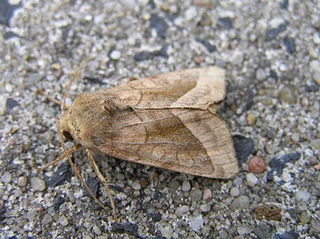
Hydraecia micacea, the rosy rustic, is a moth of the family Noctuoidea. It is found across the Palearctic realm from Ireland to Siberia. It reaches Japan and is introduced to eastern USA, Quebec and Ottawa.

Catocala electa, the rosy underwing, is a moth of the family Erebidae. The species was first described by Karl Friedrich Vieweg in 1790. It can be found in Europe and Asia.

Grammodes stolida, the geometrician, is a moth of the family Erebidae. The species was first described by Johan Christian Fabricius in 1775. It is found in Africa, southern Europe, most of Asia and Australia. It migrates to central and northern Europe as far north as England, Denmark and Finland.
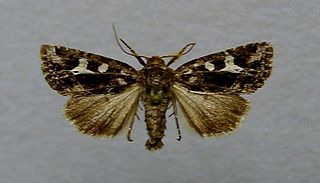
Celaena haworthii, or Haworth's minor, is a moth of the family Noctuidae. The species was first described by John Curtis in 1829. It is found from the British Isles and France through northern Europe including Scandinavia, east to the Urals and across the Palearctic to Siberia and up to the Pacific Ocean.

The double-spot brocade is a species of moth of the family Noctuidae. It is found in most of Europe, in Turkey and the west of Iran. In Anatolia it is represented by the subspecies Meganephria bimaculosa pontica.

Chazara persephone, the dark rockbrown, is a butterfly species belonging to the family Nymphalidae. It can be found from Crimea across the Caucasus and north of the Middle East to Iran; from the southern Urals across Kazakhstan to the southern Altai and west Siberia.
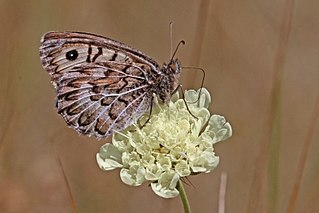
Pseudochazara geyeri, the Grey Asian grayling is a species of butterfly in the family Nymphalidae. It is confined to Albania, Greece, North Macedonia, eastern Turkey and south-western Transcaucasia.
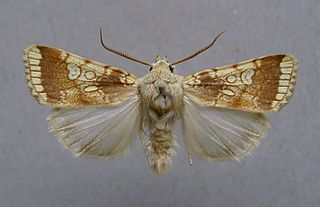
The heart moth is a species of moth of the family Noctuidae. It is found locally in Europe. It is also present in Turkey, Transcaucasia, the Caucasus, Israel, Iran and Iraq.

Aphantopus maculosa is a butterfly found in the Palearctic that belongs to the browns family. It is endemic to China.

Athyma recurva is a butterfly found in the Palearctic that belongs to the browns family. It is endemic to China.

Athyma disjuncta is a butterfly found in the Palearctic that belongs to the browns family. It is endemic to China

Athyma punctata is a butterfly found in the Palearctic that belongs to the browns family. It is endemic to China.
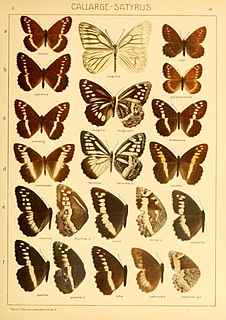
Callarge sagitta is a butterfly found in the East Palearctic that belongs to the browns family.

Chitoria modesta is a butterfly found in the East Palearctic that belongs to the browns family. It is endemic to Southwest China (Yunnan)


















